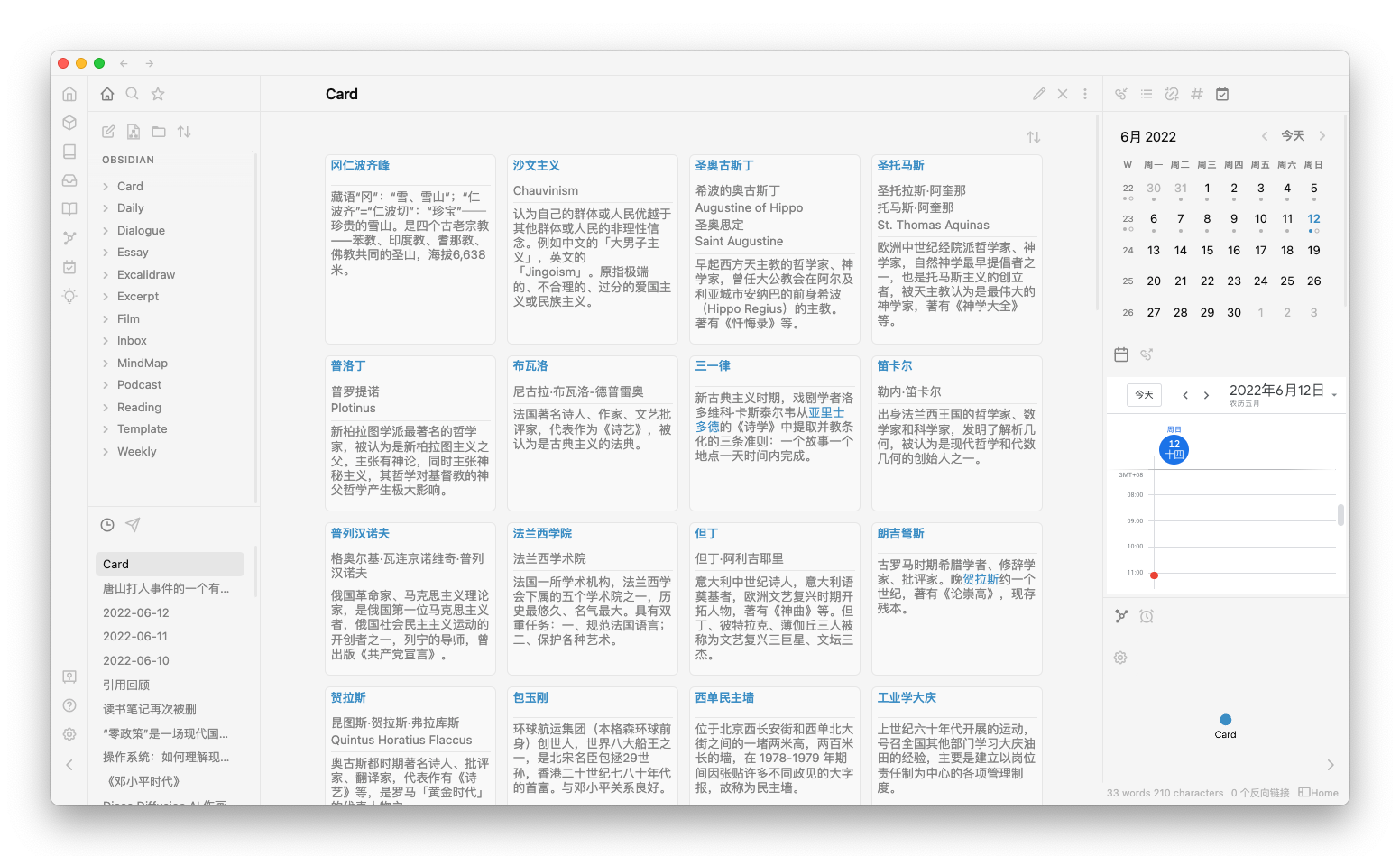Original link: https://aaronnick.github.io/posts/daily-use-of-the-obsidian/
Share your daily use of Obsidian.
Current configuration:
- Subject : minimal
- Plug-ins : Dataview, etc., it is not meaningful to list, and will be expanded appropriately in combination with my use in the future
The main purpose of my installation of plug-ins is to improve efficiency rather than aesthetics . This is the basic principle that has gradually formed; the other principle is to not destroy the markdown format as much as possible , otherwise the subsequent migration cost will be too high.
After using it for more than a year, the software that I open every day must have Obsidian. What am I using it for? You can first take a look at my folder composition :

- Collection Boxes : Create First, Sort Later
- Inbox
- Diary Weekly : Daily Recording and Planning
- Daily
- Weekly
- Books and Movies Podcast : Enter
- Reading
- Film
- Podcast
- Drawing : sketches, brain maps, flowcharts
- Excalidraw
- MindMap
- Article : Output
- Essay
- Knowledge Cards : Knowledge Worth Recording
- Card
- Excerpts : excerpts from articles, quotations
- Excerpt
- Dialogue
As you can see, my daily input and output, and even schedule planning, can be placed on Obsidian.
- Obsidian’s page organization structure : on the left is the folder and recent viewing, which is convenient for quickly switching files; in the middle is the editing viewing area; document relationship.
- Every night, I usually create a
Dailydocument for the next day to make a simple plan for tomorrow. The next day, I can implement the plan in the corresponding document and record an间歇日记.间歇日记is the focus of my daily record . It will connect时间and事件. It has been introduced in previous articles and will be expanded later, so I won’t go into details. - When recording my daily life, I may have some input , such as starting to read a book “Book Title”, at this time, a double-chain file
[[书名]]will appear in myDaily, and quickly create it through theHover Editorplugin Files toInbox, and when appropriate, toReading. The same goes for movies, podcasts, excerpts, etc. - For more detailed dimensions , I will use
标签to manage, for example, when an inspiration occurs, I will mark theideain the间歇日记. I use it more for想读想看and some tags to categorize content. This allows me to quickly locate a certain category of content in the future. For example, if I want to retrieve the recent book list, I can use the想读tag. - Regarding the output , in addition to the pipelined output of
间歇日记, there is also thematic output. One is card knowledge , I will use a fixed template, attach my own summary, and the knowledge part of the consensus, and bring the source. In the end, it will be presented in the form of a card for easy review; the other type is the theme article , the fragmented ideas will be marked with the tags I想写, and the more complete ideas will be recorded in a writing board; the other type is the excerpts of the content. The extension of this type will be imported through the plugin. I use thecalloutmark when reading, and output it as a card, which is convenient for reviewing my thoughts.
The overall usage habits are like this, and the follow-up will be carried out in combination with specific scenarios, including how to use it, and what plug-ins or shortcut operations to use.
This article is reprinted from: https://aaronnick.github.io/posts/daily-use-of-the-obsidian/
This site is for inclusion only, and the copyright belongs to the original author.